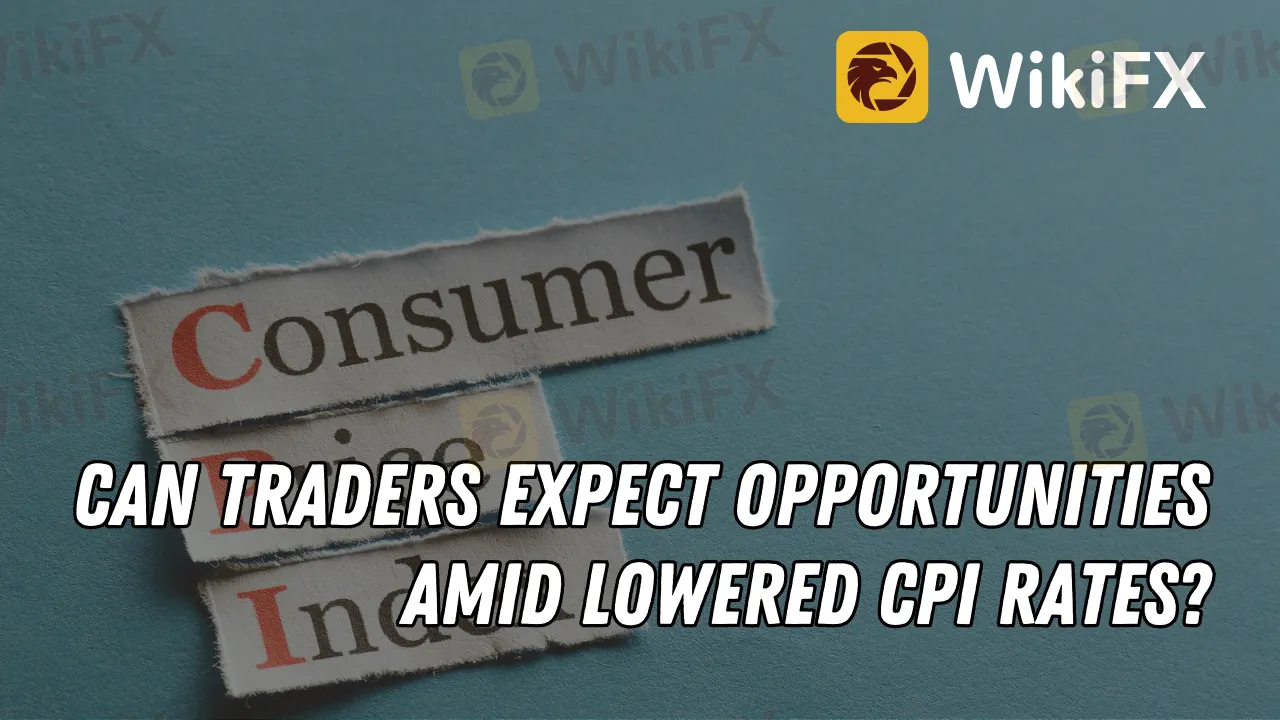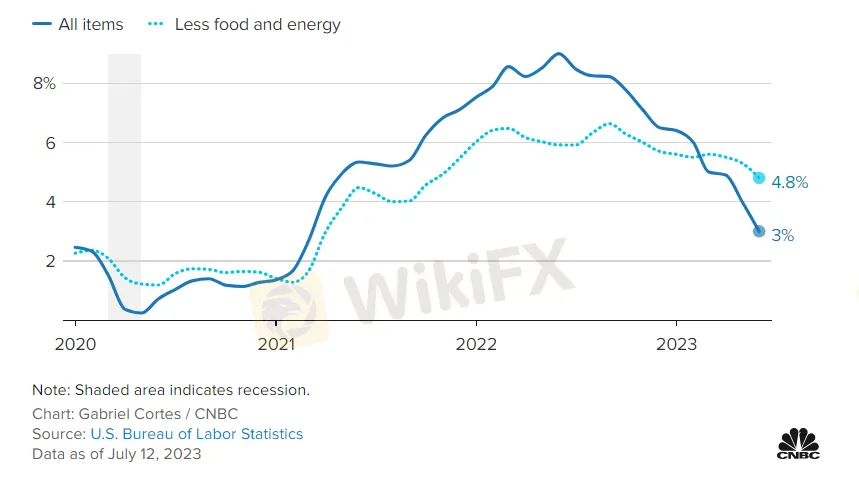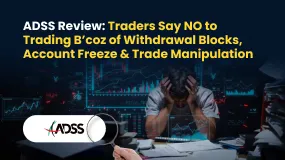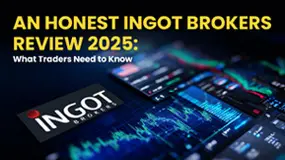简体中文
繁體中文
English
Pусский
日本語
ภาษาไทย
Tiếng Việt
Bahasa Indonesia
Español
हिन्दी
Filippiiniläinen
Français
Deutsch
Português
Türkçe
한국어
العربية
Can Traders Expect Opportunities Amid Lowered CPI Rates?
Abstract:Explore the significance of the lowest inflation rate in over two years, its impact on the Consumer Price Index (CPI), and the opportunities it presents for traders. Delve into how this eases Federal Reserve's tackling of inflation and how Wall Street reacted, as well as how the dip in CPI benefits workers' wages.

The month of June was a historic one for inflation, marking the lowest annual rate in over two years. This momentous occasion was a result of a decline in costs as well as comparisons to an era when price surges were hitting their highest in over four decades.
The Consumer Price Index (CPI), a renowned gauge of inflation, saw a year-on-year increase of 3%, the most modest growth since March 2021. Meanwhile, prices for an array of goods and services, as measured on a monthly basis, saw a rise of 0.2%.
Interestingly, this shift undercuts the Dow Jones' projections, which had anticipated rises of 3.1% and 0.3% respectively.
(Striking infographic illustrating year-over-year CPI changes up to June 2023)

When we remove the inherently unpredictable food and energy prices from the equation, the core CPI experienced a 4.8% annual and 0.2% monthly increase. While the annual rate represents the lowest since October 2021, it still falls shy of the consensus estimates, which had forecast respective increases of 5% and 0.3%.
These surprising figures present the Federal Reserve with some much-needed wiggle room as they tackle inflation, which hit a staggering 9% annual rate just a year prior — the highest since November 1981.
As George Mateyo, Chief Investment Officer at Key Private Bank, puts it, “Today's report confirms that even though the country is dealing with blistering temperatures outside, inflation is finally chilling out.” This marks a major victory for the Federal Reserve, as their policies seem to be taming inflation while not hampering growth.

However, the Federal Reserve's battle isn't over yet. Core inflation is still well over the 2% annual target, which means another rate hike is still on the table later this month, according to Mateyo.
The Federal Reserve anticipates a continued decline in the inflation rate, especially as costs of shelter ease, a factor that accounts for roughly a third of the CPI. Despite this, the shelter index saw a 0.4% uptick last month, contributing about 70% to the headline CPI increase.
Wall Street greeted this report with enthusiasm, resulting in Dow Jones Industrial Average futures climbing nearly 200 points. Meanwhile, Treasury yields saw a universal drop.
Despite these positive reactions, traders are still banking on a quarter percentage point rate hike when the Fed convenes on July 25-26.
However, the market suggests this could be the last hike before officials pause to let the previous series of increases percolate through the economy.
Back when inflation began its ascent in 2021, Federal Reserve officials and economists believed it would be “transitory,” fading as Covid-specific factors eased. However, when inflation displayed surprising tenacity, the Fed responded with a series of hikes, culminating in a 5 percentage point increase since March 2022.
On the other hand, crypto traders may expect good opportunities in trading Crypto.
Despite the overall easing in CPI, some sectors bucked the trend. For instance, energy prices went up 0.6% for the month. Yet, in a twist of fate, the energy index actually fell 16.7% from a year ago. Other sectors saw more relief, with food prices rising just 0.1%, used vehicle prices decreasing 0.5%, and airline fares plummeting 3%.
The dip in CPI also brought good news for employees, as real average hourly earnings, adjusted for inflation, increased 0.2% from May to June, and rose 1.2% on an annual basis.
Stay ahead of the curve and keep tabs on all market updates with the WikiFX App. Download it here: https://www.wikifx.com/en/download.html for all the latest news at your fingertips.

Disclaimer:
The views in this article only represent the author's personal views, and do not constitute investment advice on this platform. This platform does not guarantee the accuracy, completeness and timeliness of the information in the article, and will not be liable for any loss caused by the use of or reliance on the information in the article.
Related broker
Read more

ADSS Review: Traders Say NO to Trading B’coz of Withdrawal Blocks, Account Freeze & Trade Issues
Does ADSS give you plenty of excuses to deny you access to withdrawals? Is your withdrawal request pending for months or years? Do you witness account freezes from the United Arab Emirates-based forex broker? Do you struggle to open and close your forex positions on the ADSS app? Does the customer support service fail to respond to your trading queries? All these issues have become a rage online. In this ADSS Broker review article, we have highlighted actual trader wordings on these issues. Keep reading!

INGOT Brokers Regulation 2025: ASIC vs Offshore License - What Traders Must Know
Explore INGOT Brokers regulation in 2025: Compare their ASIC and Seychelles FSA licenses, understand trader protection levels, and learn about potential risks in this detailed guide.

INGOT Brokers Review 2025: High Risk or Hidden Gem? Expert Analysis Reveals All
Comprehensive INGOT Brokers review exploring the broker's mixed reputation in 2025. Discover the truth about regulation, trading options, and user experiences before opening an account.

Voices of the Golden Insight Award Jury | Hawk Cheng, Director of Plotio Financial Group
The “WikiFX Golden Insight Award” is dedicated to uniting industry forces to jointly build a safe and robust forex ecosystem, driving industry innovation and sustainable development. Now it launches a brand-new interview series — “Voices of the Golden Insight Award Jury”. Through in-depth interviews with authoritative jury members, this series will explore the future landscape of the forex industry and the shared mission of industry elites in enhancing innovation, compliance, and sustainable development.
WikiFX Broker
Latest News
2 Malaysians Arrested in $1 Million Gold Scam Impersonating Singapore Officials
Exness Broker Expands in South Africa with Cape Town Hub
Fraud Mastermind Zhimin Qian Sentenced to 11 Years for $6.6 Billion Bitcoin Ponzi Scheme
Is FXPesa Regulated? Real User Reviews & Regulation Check
Almahfaza Broker – 2025 Review: Safe or Scam?
Uniglobe Markets Review 2025: A Complete Guide to an Unregulated Broker
INZO Broker No Deposit Bonus: A 2025 Deep Dive into Its Offers and Risks
Global Guide to Finding Forex IBs/Brokers — Share Your Pick and Win Big!
Consob Targets Political Deepfake “Clone Sites” and Unlicensed Platforms in Latest Enforcement Round
WikiEXPO Global Expert Interviews: Gustavo Antonio Montero: ESG in Finance
Currency Calculator




